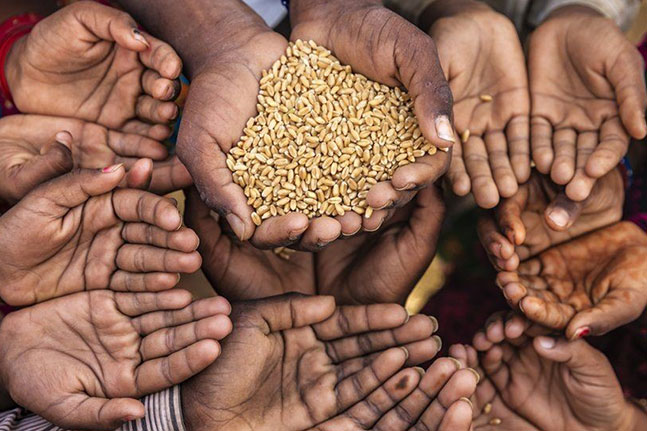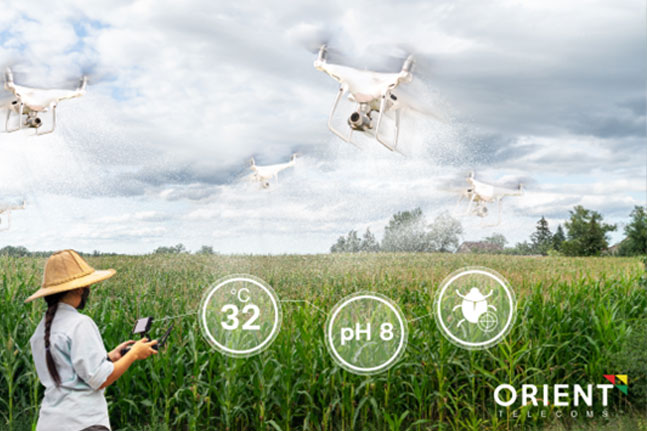
AGRICULTURAL TECHNOLOGIES ARE KEY TO AGRI-FOOD SYSTEMS TRANSFORMATION
March 28, 2024
8 TIPS FOR LONG-TERM GRAIN STORAGE
May 28, 2024What we refer to as hunger can be experienced in different ways. At its essence, it is a painful sensation caused by not eating enough food. The inability to obtain food in the face of hunger is a grievous violation of the right to food.
But many people who are not “hungry” (in the sense that they are suffering physical discomfort) may still be food insecure. They might have access to food but do not know how long it will last. They may be forced to reduce the quality and/or quantity of the food they eat to get by. This condition of food insecurity also has far-reaching consequences for mental and physical health and well-being, and for society.
So, what do we mean when we talk about hunger exactly? And how do we know how many hungry people there are in the world?
When it comes to estimating hunger, there are different measures for different purposes. Let’s explore the various methodologies used and try to make sense of all the different numbers.
MEASURING HUNGER
It is not practical to try to measure how many people in the world are feeling the physical pain or discomfort of hunger. So how does FAO measure hunger?
For decades, FAO has estimated the extent of hunger in the world using the Prevalence of Undernourishment (PoU) indicator. It measures how many people do not have regular access to enough calories, or dietary energy, for an active and healthy life. Data readily available for most countries in the world are used to do the calculations.
The PoU was included in the 2030 Agenda for Sustainable Development indicator framework (SDG Indicator 2.1.1) to monitor progress towards zero hunger.
The annual State of Food Security and Nutrition in the World (SOFI) report provides global, regional and country-level estimates of how many people are facing hunger throughout the world, in rich and poor countries alike.
About 735 million people faced hunger in 2022. These numbers come from estimates of the Number of Undernourished (NoU) and of the Prevalence of Undernourishment (PoU) produced by the Statistics Division of FAO.
PoU/NoU is a statistical methodology. It is based on country data on food availability, food consumption and dietary energy needs derived from population demographics. It measures chronic hunger defined as the long-term or persistent inability to meet minimum dietary energy requirements and is estimated to be representative of the whole population.
PoU/NoU measures undernourishment:
- in all countries
- for long-term monitoring over time
This methodology is useful to monitor national, regional and global trends, but it doesn’t tell us who is undernourished and where they live. Moreover, we now recognize that food insecurity goes beyond hunger and can be experienced at different levels of severity. That is where the next form of measurement comes in…
MEASURING FOOD INSECURITY
A person is food insecure when they lack regular access to enough safe and nutritious food for normal growth and development and an active and healthy life. This may be due to unavailability of food and/or lack of resources to obtain food.
Food insecurity can be measured at different levels of severity:
- People who are moderately food insecure are uncertain about their ability to obtain food and have had to reduce the quality and/or quantity of the food they eat to get by.
- People experiencing severe food insecurity have typically run out of food and, at worst, gone a day or more without eating.
FAO measures food insecurity using the Food Insecurity Experience Scale (FIES). Estimates of severe food insecurity based on the FIES provide an additional lens for assessing the extent of hunger.
The prevalence of moderate or severe food insecurity based on the FIES was included in the 2030 Agenda for Sustainable Development indicator framework (SDG Indicator 2.1.2) to monitor access by all people to safe, nutritious and sufficient food all year round.
The annual State of Food Security and Nutrition in the World (SOFI) report provides global, regional and country-level estimates of how many people are experiencing food insecurity at two levels of severity.
There are 2.4 billion people who are either moderately or severely food insecure in the world, assessed using the Food Insecurity Experience Scale (FIES).
FIES is a statistical methodology that measures the severity of the food insecurity experienced by people in an internationally comparable manner. It relies on people’s direct yes/no responses to eight brief survey questions. The questions focus on self-reported food-related behaviors and conditions associated with difficulties in accessing food due to resource constraints.
FIES measures food insecurity:
- at global, regional, national and subnational levels
- at two levels of severity
Using the above two methodologies, we can see the amount of chronic undernourishment in the world and the severity of food insecurity. However, there is also a way to determine where urgent food assistance is needed right away…
MEASURING FOOD INSECURITY IN CRISIS HOTSPOTS
Emergencies and shocks can cause acute food insecurity in the short-term which can be so severe that it threatens lives or livelihoods, either because of an inability to meet minimal dietary energy requirements or because essential assets needed to guarantee livelihoods are depleted in order to obtain food.
The annual Global Report on Food Crises provides an estimate of how many people face acute food insecurity in food-crisis countries.
The Integrated Food Security Phase Classification/Cadre Harmonisé (IPC/CH) estimates food insecurity in crisis hotspots over the short term when it is acute and temporary (however, repeated shocks and persistent crises can lead to situations of chronic food insecurity).
These assessments are not statistical measurements, but the result of a process of convergence of evidence reached by a country team of analysts, based on the most recent available information from various sources.
WHAT THE NUMBERS SHOW US
Every year the State of Food Security and Nutrition in the World (SOFI) report presents updated estimates to monitor progress toward SDG Target 2.1: end hunger and ensure access by all people to safe, nutritious and sufficient food all year round. The most recent numbers, as seen in SOFI 2023, show us that:
- Global hunger, measured by the prevalence of undernourishment, remained relatively unchanged from 2021 to 2022 but is still far above pre-COVID-19-pandemic levels, affecting around 9.2 percent of the world population in 2022 compared with 7.9 percent in 2019.
- An estimated 691-783 million people in the world faced hunger in 2022.
- Almost 600 million people are projected to be chronically undernourished in 2030.
- The prevalence of moderate or severe food insecurity remained unchanged at the global level for the second year in a row but was still far above the pre-pandemic level of 25.3 percent. About 29.6 percent of the global population – 2.4 billion people – were moderately or severely food insecure in 2022, 391 million more than in 2019.
- With almost seven in ten people projected to live in cities by 2050, this megatrend is shaping agrifood systems and their capacity to deliver affordable healthy diets for all and to help eradicate hunger, food insecurity and malnutrition. Understanding the changes occurring throughout agrifood systems (i.e. from food production, food processing, and food distribution and procurement, to consumer behaviour) requires a rural-urban continuum lens, reflecting the growing connectivity and interlinkages across urban, peri-urban and rural areas.
SOFI 2023 reaffirms the urgent need to address climate change, conflicts, economic downturns, and persistent inequalities that contribute to their disproportionate impacts on vulnerable populations, if we are to make progress towards our goal of ending hunger, food insecurity and malnutrition in all its forms by 2030.
https://www.fao.org/interactive/state-of-food-security-nutrition/en/





